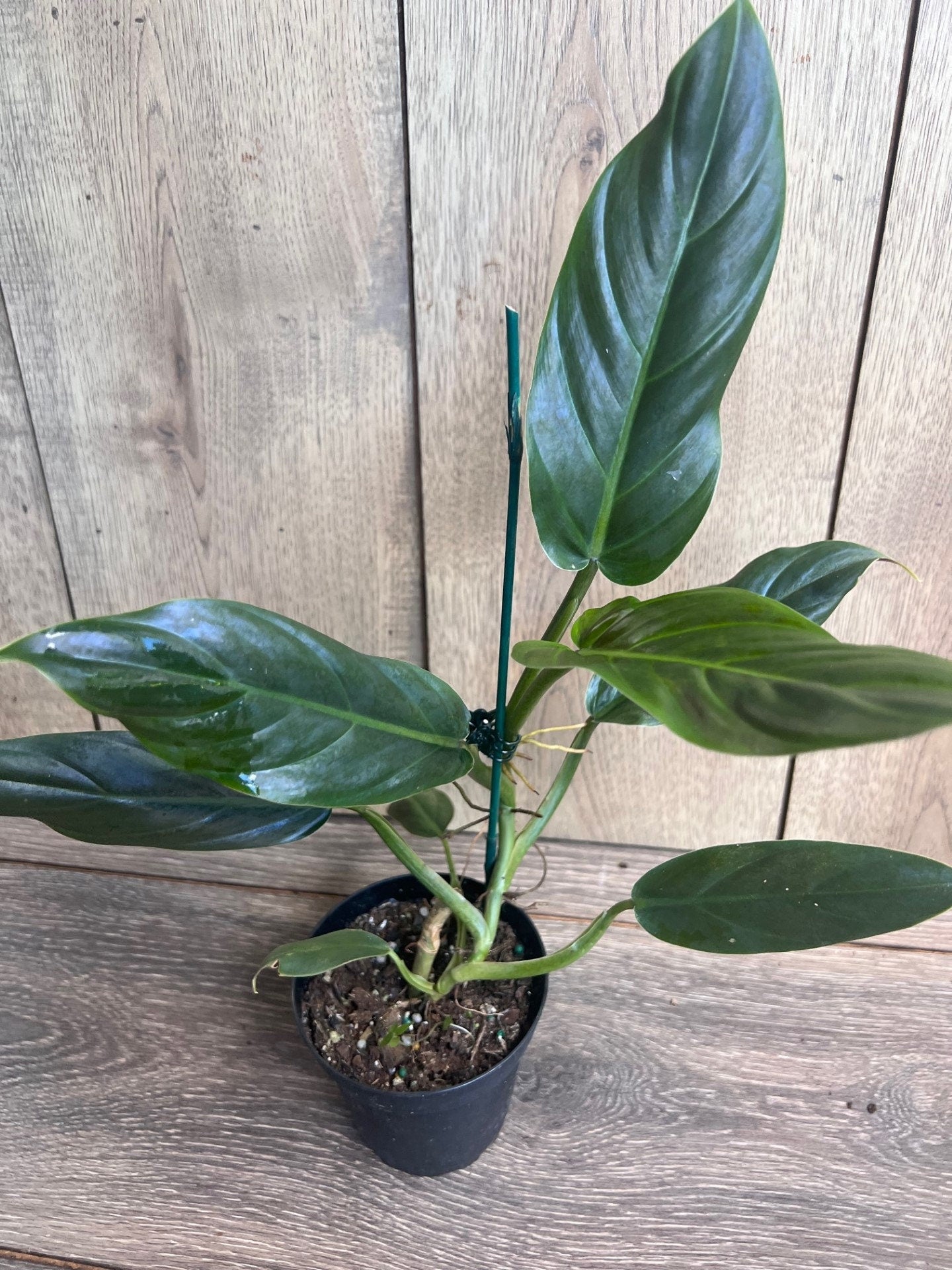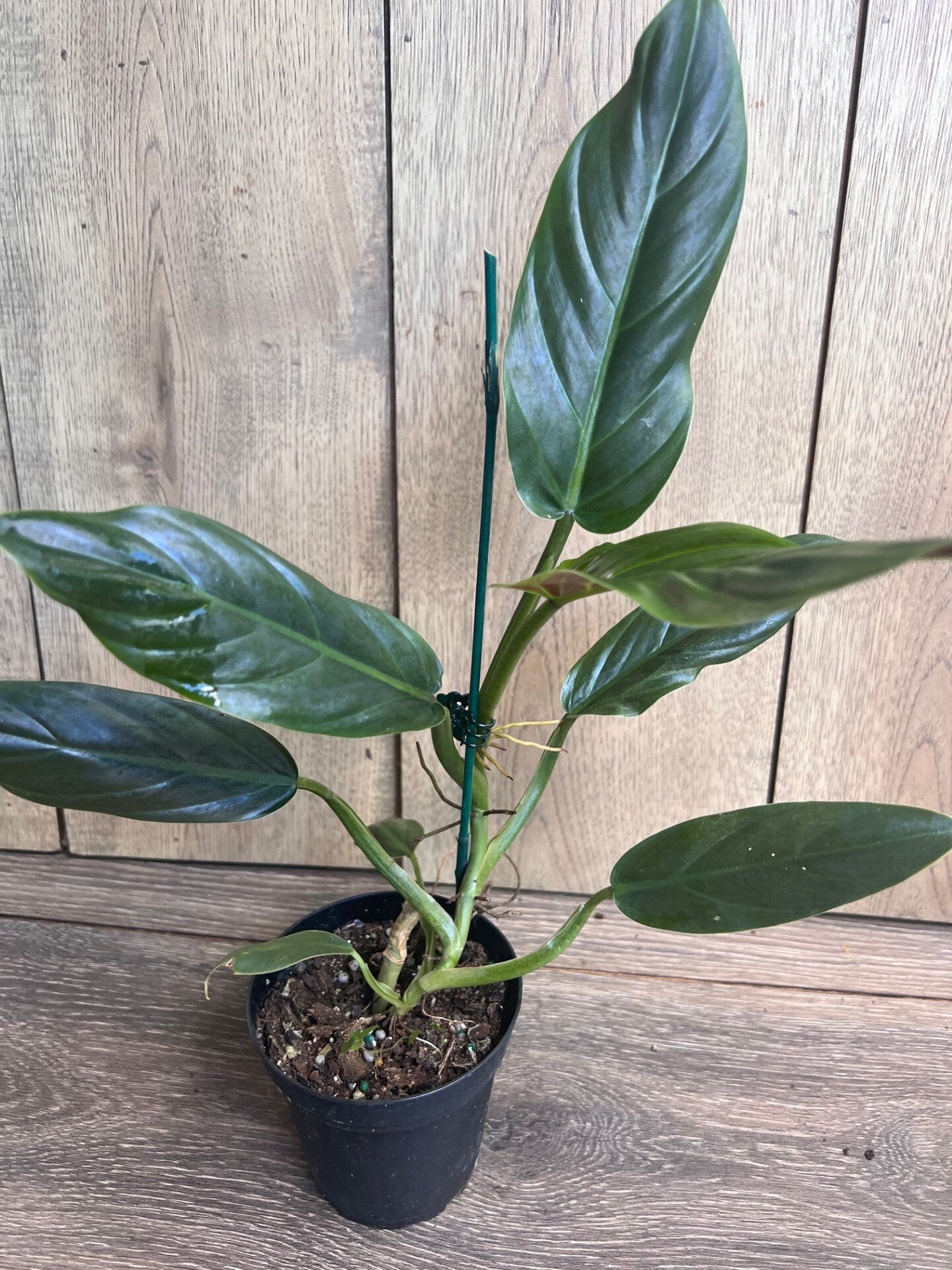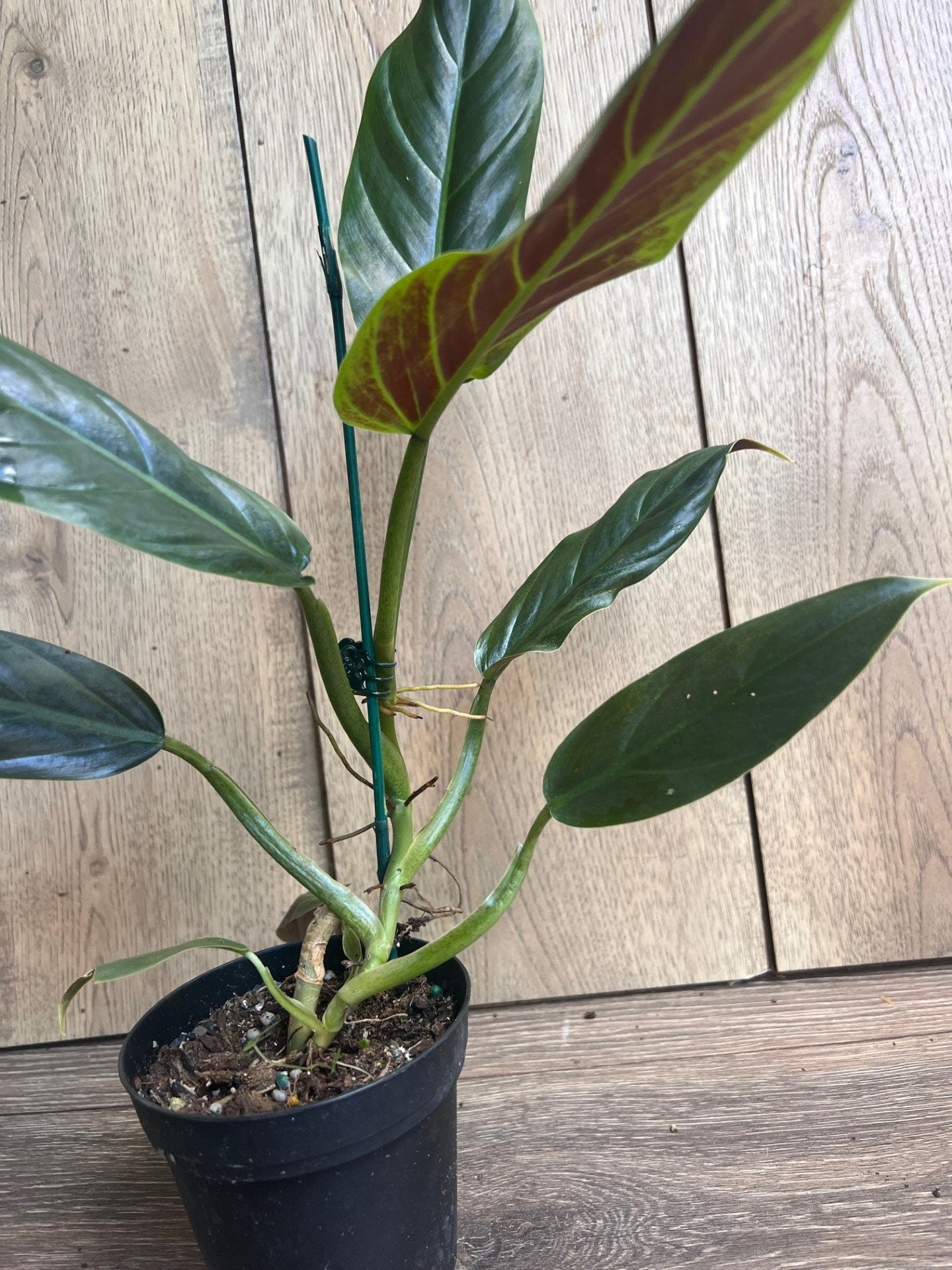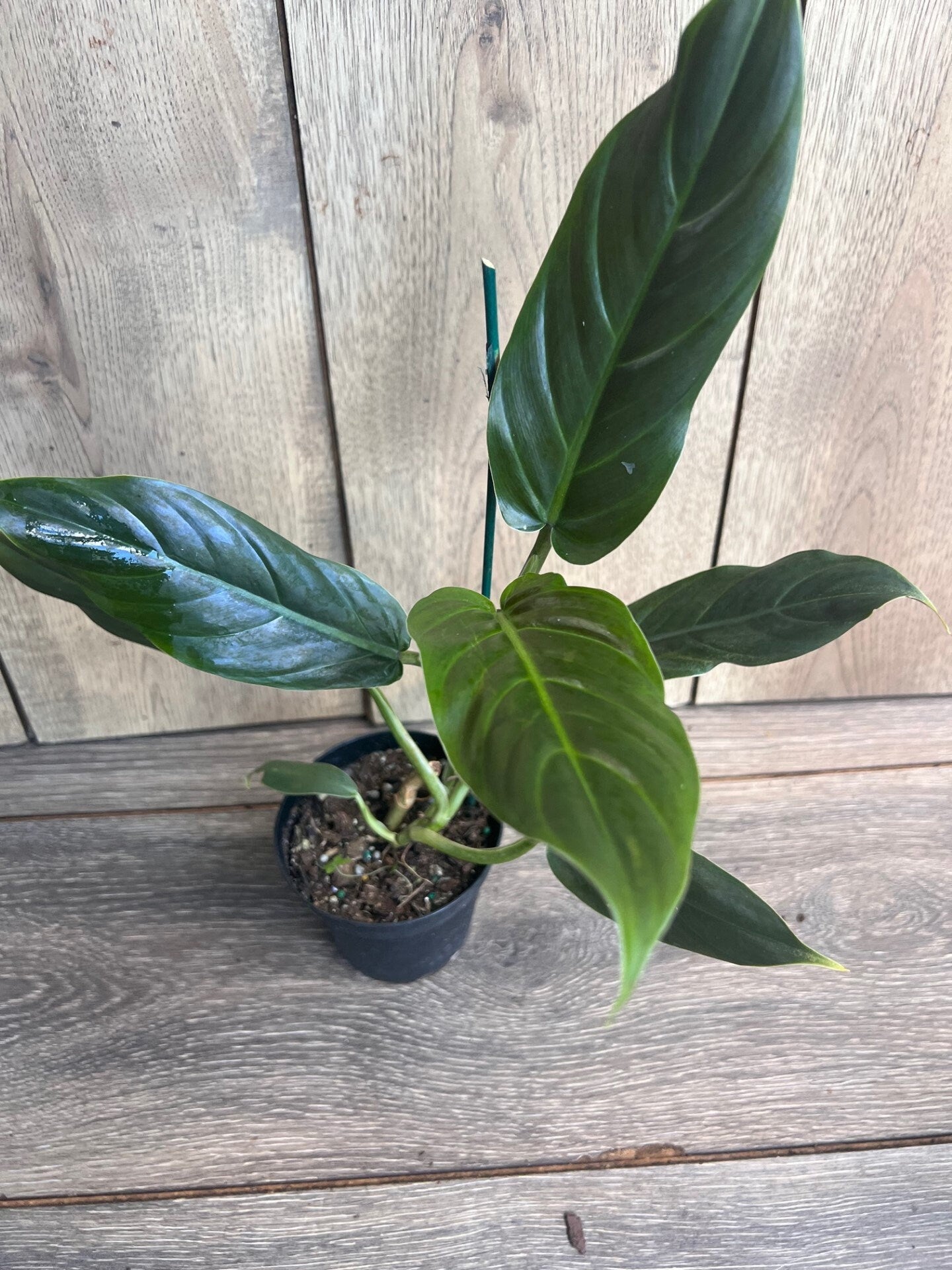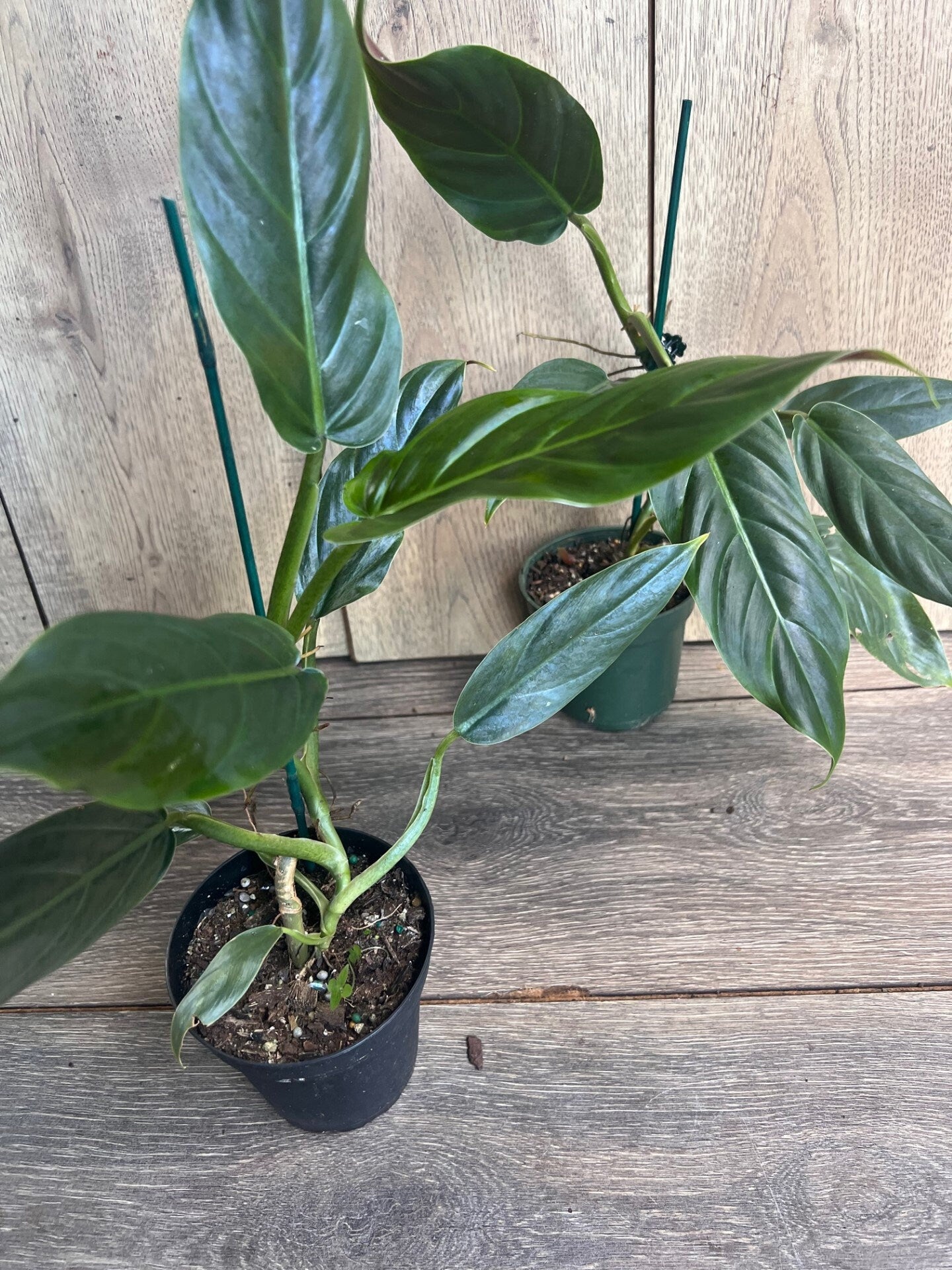Philodendron Subhastatum in 4" Pot
Philodendron Subhastatum in 4" Pot
Couldn't load pickup availability
Note: You will receive Philodendron Subhastatum in 4" Pot similar to the pictures
Philodendron subhastatum is a captivating and relatively rare species of Philodendron known for its striking foliage and dramatic appearance. Native to the tropical rainforests of South America, this plant is admired for its large, dark green leaves that have a unique, glossy finish and prominent veins. The leaves are elongated and shaped somewhat like an arrowhead, and as the plant matures, the leaves can develop a more pointed, herringbone-like appearance. One of the most distinguishing features of Philodendron subhastatum is the deep red or maroon coloring on the underside of the leaves, which adds a vibrant, contrasting accent to the plant’s dark green topside. This beautiful contrast makes it an eye-catching addition to any plant collection.
-
Light
- Philodendron subhastatum thrives in bright, indirect light. Too little light will slow down its growth and cause the plant to become leggy. It can tolerate some low light but may lose some of the vibrancy in its leaves, especially the deep red coloration on the undersides.
- Direct sunlight can scorch the plant’s leaves, so it’s important to avoid placing it in direct sun. A spot near a bright window with filtered light is ideal for this plant.
-
Watering
- Water the plant when the top 1–2 inches of soil feel dry to the touch. Philodendron subhastatum prefers slightly moist soil but doesn’t like to sit in water. Be sure the pot has proper drainage to prevent water from accumulating at the bottom, which can lead to root rot.
- During the winter months, when the plant’s growth slows down, reduce watering, but still ensure that the soil doesn’t dry out completely.
-
Soil
- A well-draining, airy soil mix is essential for this plant. A standard houseplant mix with added perlite, coconut coir, or orchid bark will improve drainage and provide the necessary aeration for healthy root growth.
- The soil should be slightly acidic to neutral (pH 5.5 to 7) to match the plant's natural preferences.
-
Temperature
- Philodendron subhastatum prefers warm temperatures between 65°F and 80°F (18°C and 27°C). It’s important to keep it away from cold drafts, air conditioning, or sudden temperature changes. The plant is sensitive to cold, and exposure to temperatures below 50°F (10°C) can cause stress or damage to the leaves.
-
Humidity
- As a tropical plant, Philodendron subhastatum thrives in high humidity (50% or higher). To maintain high humidity, you can place the plant on a humidity tray, use a humidifier, or mist the leaves occasionally.
- Low humidity can cause the edges of the leaves to dry out or curl, so try to provide the plant with as much moisture in the air as possible, particularly during the winter months when indoor air tends to be drier.
-
Fertilizing
- During the growing season (spring and summer), feed Philodendron subhastatum once a month with a balanced liquid fertilizer diluted to half strength. Fertilizing encourages healthy growth and vibrant foliage.
- In fall and winter, the plant’s growth slows down, so you can cut back on fertilizing. Over-fertilizing can lead to nutrient burn, so always dilute the fertilizer to avoid excess salts in the soil.
-
Pruning
- Pruning is not necessary unless you want to control the plant’s size or shape. You can trim back leggy or old growth to encourage the plant to grow more compact and bushy.
- If you wish to propagate Philodendron subhastatum, take stem cuttings with at least one node and propagate in water or directly in soil. Once the cutting has developed roots, it can be potted into fresh soil.
-
Repotting
- Philodendron subhastatum grows relatively quickly, so it may need to be repotted every 1–2 years or when it becomes root-bound. When repotting, choose a pot that’s 1–2 inches larger in diameter than the current pot to allow for future root expansion.
- Use fresh, well-draining soil to promote healthy root development. Repotting is best done during the growing season in spring or early summer when the plant is actively growing.
-
Pests and Diseases
- Philodendron subhastatum can occasionally suffer from pests such as mealybugs, aphids, spider mites, and scale. These pests can typically be controlled with neem oil or insecticidal soap.
- Overwatering or poor drainage can lead to root rot, so it’s important to ensure the soil dries slightly between waterings and that the pot has proper drainage. Always inspect the roots if you suspect rot and trim away any affected areas.
Share
